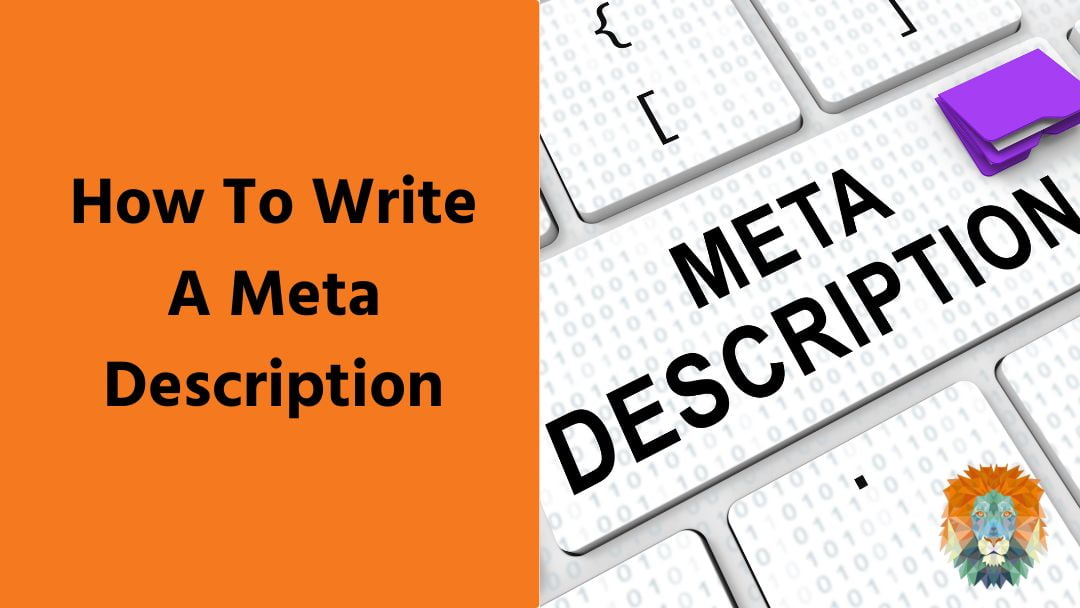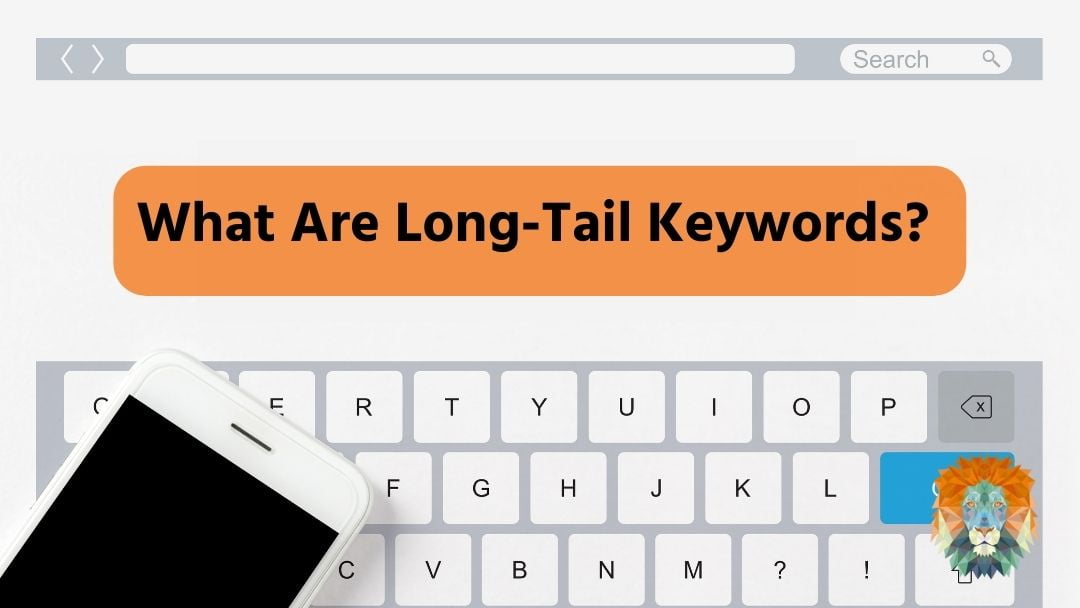Meta descriptions are essential to a website’s search engine optimisation (SEO) strategy. They provide concise summaries of webpages, helping to attract users from search engines and social media platforms. A successful meta description can boost click-through rates and improve the visibility of content on search engine results pages.
Take the example of ‘Picante Mexican Restaurant’ who revamped its existing website with compelling meta descriptions for each page. This resulted in double the number of visitors compared to before they made the change – proving that taking time to craft effective meta descriptions is worth it!
This article will outline how to write engaging meta descriptions which will help you increase your website’s visibility and maximise clicks through organic searches. It covers everything from tips on finding keywords to strategies for writing eye-catching copy.
What Is A Meta Description?
A meta description is a short HTML attribute that briefly summarises a web page’s content. It serves as an advertisement for the webpage, appearing in search engine results to draw users in. By providing concise and relevant information about the page’s contents, meta descriptions can increase click-through rates from search engine results pages (SERPs).
A meta description aims to give potential visitors an accurate overview of what the website contains. This helps them decide whether they should visit the site based on their interests and needs. The most effective meta descriptions clearly describe why someone would want to view the webpage, while avoiding keyword stuffing and irrelevant information. Good meta descriptions should be between 50–160 characters long with spaces included.
Meta descriptions have become increasingly important in recent years due to changes in how Google displays SERP results. While keywords still play a role in ranking algorithms, good copywriting skills are essential for producing compelling meta descriptions that will catch readers’ attention and make them more likely to click through your link.

Benefits Of A Meta Description
Consequently, a meta description offers numerous benefits to those utilising the power of SEO. For starters, it effectively draws readers in and entices them to click on content they may otherwise overlook. Furthermore, using strategic keywords within the description can help boost rankings in search engine results pages (SERPs). Lastly, crafting a compelling title and meta-description combo also helps increase page views and brand recognition.
In addition to providing these advantages for website owners, there are several other reasons why including a meta description is beneficial. Firstly, when creating meaningful titles and descriptions that accurately reflect the web page’s content, will result in higher user engagement rates – meaning users are more likely stay longer on your website!
Secondly, you can further improve SERP visibility by implementing specific keywords or phrases into both elements – such as ‘meta description seo’ or ‘how to write meta descriptions’. Thirdly, having concise yet descriptive titles and meta descriptions makes it easier for browsers scanning through SERPs to find exactly what they need without needing extra clicks.
Meta descriptions provide an invaluable opportunity for site-owners wishing to optimise their online presence; with just 160 characters available per snippet, writing catchy copy that resonates with potential readers requires effort but ultimately proves worthwhile. As long as website owners ensure their titles and descriptions incorporate targeted keywords while remaining true to the page’s contents, they stand a better chance of increasing clickthrough rate and overall visibility.
Character Limit For A Meta Description
A meta description is a snippet of text describing your website page’s content. It gives search engines and users an overview of what to expect when they click through to the page. Writing effective meta-descriptions requires careful consideration, especially in terms of length. In this part, we’ll discuss the character limit for a meta description and how it affects SEO performance.
Google sets the maximum length for a meta description at around 160 characters or 900 pixels wide which includes spaces. Anything beyond 160 characters could be truncated by Google’s algorithm when displaying results in SERPs (search engine result pages). So it generally advisable to keep your meta description less than 150 characters.
This means that not all of your carefully crafted copy may appear if it exceeds the character limit given by Google. As such, you should try to keep your “meta-description” succinct yet compelling – within limits set by Google to maximise visibility in organic search results. It is worth noting that at times Google will decide how much of your Meta description to show in the results and whether they show it or not so it is possible they will use either a Snippet from your page instead of your meta-description. It is however still important that you write and specify one!
Words And Phrases To Include In A Meta Description
With everything above in mind, here are some tips for writing effective meta descriptions:
When creating a meta description, use keywords related to the subject matter covered on the page; these should also appear in the title or heading tags. For best results, target two-to-three primary keywords per page with their respective meta description. Additionally, avoid repeating certain words too often when crafting your copy – if you must repeat them multiple times due to limited space requirements, consider using synonyms where possible.
How To Create An Engaging Meta Description
Crafting an effective meta description is like painting a masterpiece. It requires creativity, attention to detail and capturing what makes your content unique in just 155 characters or less. A great meta description not only serves as an accurate summary of a page’s contents but also entices people to click on it when they see it listed in search engine results pages (SERPs). Here are some tips for writing engaging meta descriptions:
- Optimise for SEO: Use relevant keywords that accurately describe the page’s content and use them naturally within the meta description. The better optimised your meta titles and descriptions are, the more likely they will be seen by potential readers.
- Be Concise: Keep sentences short and succinct so that users can quickly understand what the page offers without having to read too much text. Aim to write between 50 – 160 characters including spaces.
- Share Benefits: Explain why visitors should click through to your page instead of someone else’s with compelling benefits such as discounts, special offers or exclusive features.
- Include Calls To Action: Provoke action from searchers using calls to action such as ‘Learn More’, ‘Download Now’ or ‘Sign Up Today’ which encourages clicks and helps you stand out from competitors’ SERP listings.
- Use Unique Content: Make sure each meta description is written uniquely for each page; this ensures that there isn’t any duplicate content across multiple URLs which could negatively impact rankings in SERPs.
While creating an effective meta description may seem daunting at first glance, following these best practices will help ensure yours stands out amongst all other SERP listings – increasing both user engagement and website traffic alike!
Avoiding Duplicate Content
Avoiding duplicate content is a key factor in constructing effective meta descriptions. Duplicate content can lead to lower rankings and less traffic for websites, so it’s important to ensure that the text provided within the meta tag description field is unique. In order to avoid creating identical or similar versions of the same website page or post, use a meta description checker tool to compare all relevant pages on your site against one another. This will help you identify any similarities between them, which could result in search engines penalising you for having duplicate content.
When writing good meta tag descriptions, ensure every page has its own individualised version of descriptive text that accurately summarises what’s being offered on each web page. You should also keep an eye out for any overly generic language used when crafting meta descriptions, as this can be seen by search engine algorithms as indicative of duplicated content.
Last but not least, consider consulting some examples of successful meta tag descriptions from other popular sites across the web – this way you’ll have tangible evidence on how best to construct your own narrative without risking falling victim to copy-paste mistakes or accidentally plagiarising someone else’s work! By following these steps, you can create unique yet informative meta descriptions that boost visibility while avoiding problems with duplicate content altogether.
Including Call-To-Actions In The Text
The usefulness of call-to-actions (CTAs) in the text is an important factor to consider when writing a meta description. CTAs are effective tools for driving user engagement and increasing click-through rates as they give users clear directions on what actions they should take next. By including relevant calls to action, writers can encourage audiences to read their content.
Tools To Help With Writing Good Meta Descriptions
Creating meta descriptions that are well-written and effective can be a daunting task. Thankfully, some great tools are available to help make this process easier. Here’s a list of four helpful resources for writing quality meta descriptions:
- For WordPress sites, RankMath is great for optimising your Meta Descriptions, and that isn’t all you input your main target keyword and it checks your content and advises you on how to optimise it for that keyword. Best of all most of the features are free but you can pay to get more including Content AI which uses the current search results for your keyword to suggest how your content can be improved further, it provides insights into how many words, images/media, links, headings you need to add as well as suggesting other keywords you could add.
- AI Tools like ContentBot and Jasper can both write Meta Descriptions for you, as well as assist in the creation of your content in the first place!
- A great free tool you can use to preview your Title and Meta Tags is Rankmaths Meta Tag Analyser, it advises on your current character count and let shows you how your Meta Description will look on the Search Engine results page of Google, Bing, Duck Duck Go and Yahoo. As a bonus, it can pull your existing tags in to see how they will look, or you can put in one of your competitor’s URLs to see what they have used, this is great for inspiration!
Examples of Meta Descriptions
In this section, we provide examples of meta descriptions to help you understand how to write effective meta descriptions for your own website.
- Get your dream job with our free resume and cover letter templates. Stand out and get hired!
- Shop our high-quality and unique collection of jewellery. Perfect for special occasions or everyday wear.
- Our new Italian restaurant in London offers traditional Italian dishes with a modern twist. Stop by and try it today!
- Learn more about our all-natural skincare products. Cruelty-free, vegan and perfect for any skin type.
Frequently Asked Questions
How Often Should I Update My Meta Description?
Have an understanding of the type of content on your webpage: If the page contains evergreen content (information that doesn’t change over time) then it may not need frequent updates – however if the post focuses more on current events or news, then more regular updates may be necessary to keep up with changes in relevance.
Utilise data-driven insights: Use metrics such as click-through rate (CTR), organic traffic and keyword rankings to gain insight into what keywords are resonating well with users and adjust accordingly by altering the meta description as needed. For instance you might write a post targetting a keyword only to find it actually performs better for a different one, if this is the case it may be worth updating the Meta description and optimising the post for this keyword instead.
Consider other factors: Things like seasonal trends, user intent and changing consumer demands will all affect how often you need to update your meta description; staying aware of these elements will enable you to stay one step ahead of the competition.
It’s clear that regularly refreshing your meta description is essential for maintaining visibility online – but finding a balance between too much or too little frequency requires careful consideration of many different aspects specific to each web page. By considering factors such as content type, user behaviour and market demand, businesses can build an effective strategy for keeping their meta descriptions up-to-date and optimised for maximum impact.
Does The Meta Description Appear In Search Engine Results?
To answer this question directly: yes, meta descriptions do appear in SERPs and are displayed beneath each result’s title and URL. This makes them incredibly valuable for increasing organic traffic as they give users an idea of what the page entails before clicking through. Furthermore, due to their limited length – usually around 150 to 160 characters – crafting a good meta description requires careful thought and precision.
That said, there may be cases where your content does not feature in SERP listings even if you have created a well-crafted meta description. In these instances, Google will typically pull text from other areas on the page that more closely matches user’s query terms. Ultimately, while having a good meta description helps improve visibility in SERPs; creating SEO friendly content with relevant keywords embedded throughout remains essential for high rankings.
Is The Meta Description Visible To The Website User?
To start with, let’s look at what a meta description is and how it works. Essentially, it’s an HTML tag located within the head section of a webpage which provides a summary about its content. Search engines use these descriptions when displaying results on their pages; however, they are not always displayed in full length due to space restrictions. Here are some key points:
Meta descriptions provide summaries of page content
They’re used by search engines to display information about webpages in SERPs
Due to size limits, only part of the description may appear in search results
So does this mean that meta descriptions aren’t seen by website visitors? Not necessarily! Depending on how the website has been set up and coded, there could be various ways that users might come across them.
For example, certain plugins may add them onto blog post titles or excerpts while others might include them on social media sharing links too. In addition, they may even show up within featured snippets or related questions boxes provided by Google.
This means that although not everyone will see meta descriptions in their exact form as written by you – they still serve as another way to draw attention from users and increase clicks through rate (CTR).
Does The Meta Description Need To Be The Same Across All Pages?
What Is The Difference Between A Meta Title And A Meta Description?
Meta descriptions, meanwhile, appear below titles in SERP listings and offer further information about their corresponding sites’ content without appearing directly on them. Descriptions give readers context before clicking through.
Having clear distinctions between titles and descriptions ultimately allows businesses to maximise their chances of ranking higher on SERPs and gaining more exposure online.
Conclusion
Meta descriptions are an important part of website optimisation. They provide valuable information for search engine users and help to increase click-through rate of websites in search results. It is therefore essential that meta descriptions are crafted carefully with the right techniques, style and length in order to maximize their effectiveness.
The first step to writing a successful meta-description is understanding its purpose. Meta descriptions should be concise summaries of what can be found on your web page, and they should include relevant keywords which will boost visibility in SERPs (search engine result pages). Additionally, it may also be helpful to use rhetorical devices such as alliteration or similes as these can engage readers more effectively than plain text alone.
When crafting meta descriptions, one must consider how often they should update them and if there needs to be different versions across different pages. Updating regularly helps keep content fresh and helps maintain relevance to current trends and topics discussed on the webpage itself; however, ensuring consistency between each version is paramount so that visitors know exactly what kind of information they’ll find when clicking through from the SERP listing.
Finally, it’s worth noting the distinction between a meta title tag and a meta description: while both communicate key aspects about the page contents, titles appear at the top of SERP listings whilst descriptions appear directly beneath them – making them equally significant elements when optimising for increased visibility online. By utilising best practices when writing meta descriptions, businesses will have greater success in achieving high rankings within search engines.





0 Comments